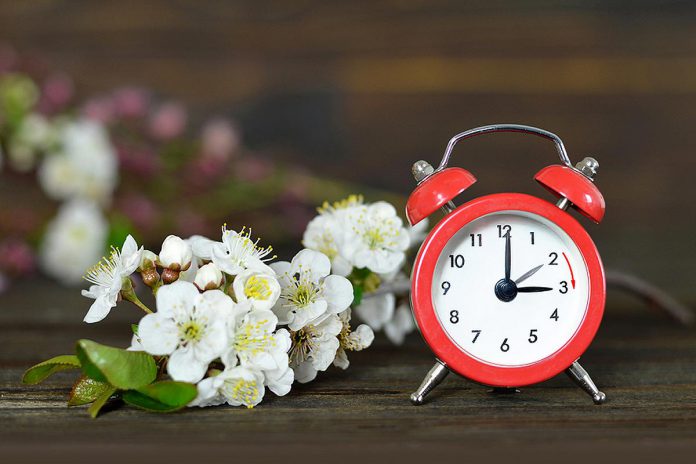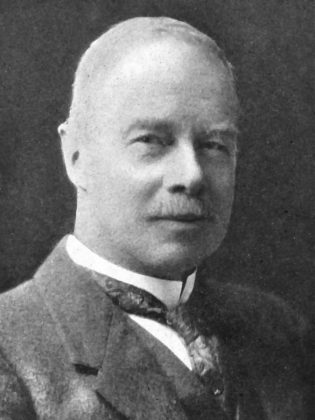
The second Sunday of March is almost here, which means it’s time to “spring forward” as daylight saving time (DST) begins at 2 a.m. on Sunday, March 13th and clocks move forward an hour.
Whether you call it “daylight savings” or “summer time” or “cottage time”, the good news is that we’ll get more daylight in the evening hours (the sun will set at 7:17 p.m. on Sunday night). The bad news is that we’ll lose an hour of sleep and it will be darker in the morning (the sun will rise at 7:29 a.m. on Sunday morning).
If you still have any manual clocks, remember to set them forward an hour before you go to bed on Saturday night.
The time change is also when you should replace the batteries in your smoke alarms and carbon monoxide detectors and check whether the devices need to be replaced (if they are more than 10 years old, they probably do).
Who invented DST and why?

Although it’s commonly believed Benjamin Franklin came up with the idea for DST, it was actually New Zealand entomologist George Hudson.
In 1895, Hudson proposed a two-hour shift in the clocks (he wanted more daylight to collect insects).
“The effect of this alteration would be to advance all the day’s operations in summer two hours compared with the present system,” Hudson wrote in 1898, explaining his original proposal. “In this way the early-morning daylight would be utilised, and a long period of daylight leisure would be made available in the evening for cricket, gardening, cycling, or any other outdoor pursuit desired.”
A few years later, English outdoorsman William Willett also proposed advancing the clocks during the summer months (he wanted more daylight to golf).
The first governments to implement DST were Germany and Austria-Hungary in 1916, as a way to conserve coal during World War I. Britain and most other European countries adopted it shortly after, with the United States and Canada adopting it in 1918.
DST used to begin the first Sunday of April and end the last Sunday of October, but in 2007 the U.S. decided to change it to begin the second Sunday of March and end the first Sunday of November in an attempt to conserve energy.
To avoid issues with economic and social interactions with the U.S., the Canadian provinces that observe DST followed suit.
Why don’t we just get rid of DST?
If the Ontario government has its way, we’ll be ending the practice of changing our clocks twice a year — but by making DST permanent rather than getting rid of it.
On November 25, 2020, the Ontario government gave royal assent to The Time Amendment Act, a private members’ bill tabled by Ottawa-West Nepean MPP Jeremy Roberts that proposed making “the time now called daylight saving time the standard time year-round”.
Researchers in chronobiology (the study of biological rhythms) agree that we should get rid of the bi-annual time change, but not by making DST permanent. They say we should be permanently adopting standard time instead.
“Based on current chronobiology knowledge, permanent Standard Time (ST) would be a wiser, healthier choice,” the Canadian Society for Chronobiology writes on Twitter.
Chronobiologists say adopting permanent standard time would move sunrise closer to our body’s internal clock, while permanent daylight saving time would move it further away. It’s the light in the morning that is most important in resetting our biological clocks, they say.
And it’s not just the Canadian Society for Chronobiology advocating for the permanent adoption of standard time. The U.S.-based Society for Research on Biological Rhythms, the European Biological Rhythms Society, and the European Sleep Research Society have all issued statements supporting getting rid of DST.
As for the province’s The Time Amendment Act actually being enacted, don’t hold your breath. Ontario will only make DST permanent if the province of Quebec and the state of New York do the same.
“We’ve built in a contingency to make sure that this bill will only come into force at the discretion of Ontario’s Attorney General,” MPP Roberts said in the Ontario legislature on November 25th. “The Attorney General has given me his word that he will not do this until we get our other neighbouring jurisdictions on board.”
What are the health effects of DST?
While the evidence is mixed, some research has found that when we “spring forward” the risk of heart attacks and traffic accidents increases.
Losing an hour of sleep in the spring can affect both your cognitive ability and your physical health, especially if you aren’t getting enough sleep to begin with.
That’s because moving clocks forward changes our exposure to daylight and affects our circadian rhythm (the body’s natural internal clock).
It can take up to a week to adjust your internal clock to the shift in daylight hours, so here are some suggestions for how you and your family can adapt more quickly to the coming time change:
- Each morning leading up to the time change on Sunday, try waking up 15 minutes earlier than normal.
- Also try going to bed 15 minutes earlier than normal each night. You can help prepare your body for an earlier bedtime by not eating two hours before you go to sleep, and put down your devices an hour before bed.
- Eat a healthy breakfast when you first wake up, as food is one way to tell your body it’s the beginning of the day.
- After the time change, expose yourself to daylight during waking hours as much as possible.
- Reduce your use of caffeine and alcohol during the day and increase your physical activity.



























